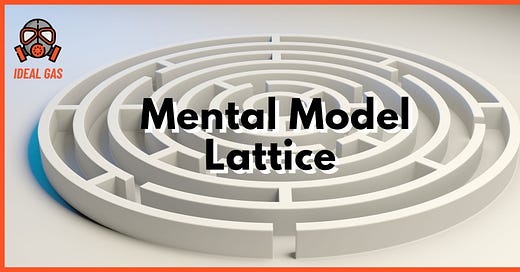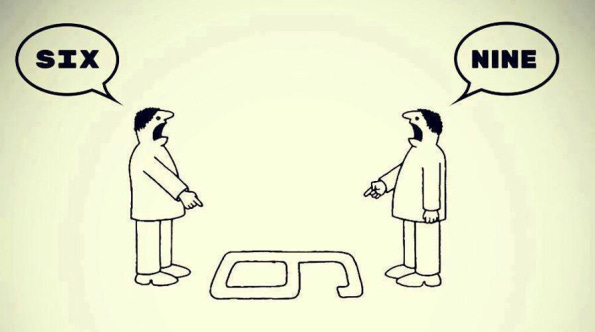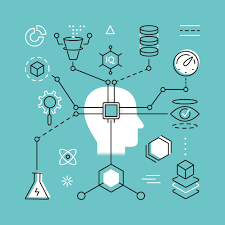25 guys, 5 days, 1 location – No phones or outside connection. This is no Big Boss, this is as real as it gets – SSB (Service Selection Board), Indian Navy. It is one of the best experiences one could possibly have. Your phone is taken away, and you have 5 entire days of introspection and networking with a truly diverse set of people. One makes life-long friends and goes back with some important lessons. Well, why I didn’t get selected is a different story, but today’s story erupts from an interesting test used in the armed forces selection process – the PPDT (Picture Perception and Description Test).
In PPDT a picture is shown – a vague one, more often than not. You have to describe your perception of what is going on the picture - the setting of the picture, the people or the characters and the situation. What does this test? Observation skills? Imagination? Creativity? Maybe. More importantly, your mental models.
There is honestly a lot out there. Like too much [Tired of using the word “complex” too often]. The number of variables in the world around us, effecting our decisions/perception of the world. Information explosion and cognitive impairment due to choice overload are real (Always go for the Chef’s special?)
So what we do in our heads is that we reduce the number of variables we take in to account while decisions or interpreting the world around us. This is in effect, is a mental model. Removing the unwanted or lesser impacting variables.
Models power; Models limit
When a botanist looks at a forest they may focus on the ecosystem, an environmentalist might see the impact of climate change, a forestry engineer the state of the tree growth, a business person the opportunity of the land. None are wrong, but neither are any of them able to describe the full scope of the forest. Their expertise is what fuels them and powers their progress in their fields. But the same models also limit their thinking, in terms of what a given ecosystem can entail.
In “The psychology of Money” by Morgan Housel [Must read] chapter by chapter the author is trying to change our mental models. When it comes to investing money, we think only in terms of ROI. He teaches us to think in terms of freedom, or happiness. He says that locking-in your money for 5 years, in a fund giving insane returns might be great on the ROI model. But the sense of freedom you have in terms of say, quitting your job or going on a vacation whenever you want to, is priceless. In this mental model, ROI seems inconsequential (even if the money fails to beat inflation!)
Some of the common core-thinking mental models are:
1. Circle of Competence: Steve Jobs tried to tell CEO of Corning how to make the glass. Instead of arguing, Weeks (the CEO) let him explain the way his preferred method would work. As Jobs started talking, it became clear to both of them that he didn’t fully understand how to design glass that wouldn’t shatter. It’s about knowing what you understand, and acknowledging what you don’t. Understanding your circle of competence improves decision-making and outcomes.
2. First Principles Thinking: It’s a tool to help clarify complicated problems by separating the underlying ideas or facts from any assumptions based on them. What remains are the essentials. If you know the first principles of something, you can build the rest of your knowledge around them to produce something new. A cook can make some changes in a dish they have been making (they think by analogy), but a chef can produce something totally new from their understanding of the ingredients and principles of cooking (they think by first principles).
3. Second-Order Thinking: Thinking only of the first layer of consequences can be disastrous. It requires us to not only consider our actions and their immediate consequences, but the subsequent effects of those actions as well. Failing to consider the second and third order effects can unleash disaster.
4. Inversion: If you know the answer, you’ll probably get to the answer anyhow – A skill most students master in their math curriculum. Well, it’s a mental model. Thinking backwards is a tool many organisations work with. But the caveat is knowing the answer – if you are not sure of that, then this doesn’t work.
5. Occam’s Razor: “Balance of probability, Sherlock” Simpler explanations are more likely to be true than complicated ones. It is a mental model, advocating the use of mental models. Instead of wasting your time trying to disprove complex scenarios, you can make decisions more confidently by basing them on the explanation that has the fewest moving parts.
The case for diversity
While we saw the core-thinking mental models above, remember that these are just general thinking models. Models can be of any nature. For instance, having a set of competencies to check while taking hiring interview focuses your attention on the competencies that matter to your organisation. Or the departmental dashboard you use to measure your progress.
The quality of our thinking is proportional to the models in our head and their usefulness in the situation at hand. It turns out that when it comes to improving your ability to make decisions variety matters. Yes, diversity helps.
This can be explained through a team composition (Where every individual has their own mental model). By default, a typical engineer might think in systems. A psychologist might think in terms of incentives. A biologist might think in terms of evolution. By putting these disciplines together in our head, we can walk around a problem in a three-dimensional way. This is the core reason to increase diversity of age, geography and backgrounds. This brings out perspectives that the others may have filtered out of their models.
Fine, we need to have more than one model, but the second aspect that one needs to pay attention to is that while choosing other models, we should ensure that it is just not different, but also diverse. This time, let us use a mathematical example. A VC firm might score each of these dimensions on a scale from 1 to 5 and then assign an aggregate score as follows:
Score = 10*Team + 8*Market size + 7*Technology + 4*Timing
This might be the best model the VC can construct. The second best model might use similar variables and similar weights. If so, it will suffer from the same flaws as the first model. That means that combining it with the first model will probably not lead to substantially better decisions. Different doesn’t mean diverse.
“To be wise you must arrange your experiences on a lattice of models.”
— Charlie Munger
Models are great for making decisions, and occupy less amount of brain RAM per decision. But as we all make mental models, for our work style, for our relationships and for our lifestyle, we reduce the number of variables and hence increase our biases. A possible antidote to that is increasing diversity in our lives. Reading more, doing more, travelling more, or binging on world cinema – the choice is yours.






